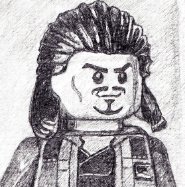
Anyway, this pizza joint is also now a Pokéstop. Which is preeeetty great 'cuz I can get a steady stream of Pokéballs.
But.
And this is the magical part.
Everyday, at some time at night, someone decides to put a Lure there. Now, Manhattan is full of Lures at night (must be when the Pokémon trainers come out to hunt). But this one is under my apartment.
Woo drunk Pokémon Go players who enjoy microtransactions!
- Read more...
- 1 comment
- 2,820 views

